Katalin Karikó and Drew Weissman were not the only ones to receive this year's Nobel Prize for their contributions to these injections. Three others were awarded for the quantum dots in these vials, the presence of which is still shrouded in mystery.
!!!!!!!!!!!!!!!!!!!!!!!!!!!!!!!!!!!!!!!!!!!!!!!!!!!!!!!!!!!!!!!!!!!!!!!!!!!!!!!!!!!!!
STOCKHOLM, Oct 4 (Reuters) - Sweden's Royal Academy of Sciences appeared to have inadvertently published names of three scientists it said had won this year's Nobel Prize in chemistry, although the award-giving institute said the decision was still hours away.
Swedish newspaper Aftonbladet published a copy of an email its said was from the academy naming the laureates as Moungi G. Bawendi, Louis E. Brus and Alexei I. Ekimov.
"The Nobel Prize in Chemistry in 2023 rewards the discovery and development of quantum dots, nanoparticles that are so small that their size determines their properties," Dagens Nyheter (DN), another Swedish daily, quoted an email from the academy as saying.
But Johan Aqvist, chair of the academy's Nobel committee for chemistry, told Reuters: "It is a mistake by the Royal Swedish Academy of Sciences. Our meeting starts at 0930 CET (0730 GMT) so no decision has been made yet. The winners have not been selected."
!!!!!!!!!!!!!!!!!!!!!!!!!!!!!!!!!!!!!!!!!!!!!!!!!!!!!!!!!!!!!!!!!!!!!!!!!!!!!!!!!!!!!
So, they won Nobel Prize, before the committee meeting! Oh my!
I agree, it's quite an achievement!
WHY IS IT SO IMPORTANT NOW?
BECAUSE THIS IS THE TECHNOLOGY FOR THE UPCOMING CBDC UTOPIA!!!
https://www.thecrimson.com/article/2023/10/6/nanoscience-bawendi-chemistry-nobel/
These robust quantum dots are essentially very small balls that confine electrons into a compressed state. This makes them auspicious for storing energy, which the electrons release as electromagnetic radiation. These emitted bundles of light — or photons — vary in color depending on how much the electrons are squeezed, or the size of the quantum dot. The smaller the dot, the higher the energy frequency, translating to bluer light.
Bawendi’s lab continues to work with quantum dots, especially their potential use as quantum emitters, sources of “very special kinds of photons.”
“You might be able to do something called photon entanglement, create these really weird quantum entities that we can then use for cryptography or for communication, for computing, or even sensing,” he added.
Bawendi stressed “the importance of curiosity-driven research.”
https://onlinelibrary.wiley.com/doi/10.1002/qute.202100116 Quantum Communication Using Semiconductor Quantum Dots - Vajner - 2022 - Advanced Quantum Technologies - Wiley Online Library
Over the last decade, significant progress has been made in the engineering of on-demand quantum light sources based on semiconductor quantum dots, which enable the generation of close-to-ideal single- and entangled-photon states, useful for applications in quantum information processing. This review focuses on implementations of, and building blocks for, quantum communication using quantum-light sources based on epitaxial semiconductor quantum dots. After reviewing the main notions of quantum communication and introducing the devices used for single-photon and entangled-photon generation, an overview of experimental implementations of quantum key distribution protocols using quantum dot based quantum light sources is provided. Furthermore, recent progress toward quantum-secured communication networks as well as building blocks thereof is summarized.
Over the last decade, significant progress has been made in the engineering of on-demand quantum light sources based on semiconductor quantum dots, which enable the generation of close-to-ideal single- and entangled-photon states, useful for applications in quantum information processing. This review focuses on implementations of, and building blocks for, quantum communication using quantum-light sources based on epitaxial semiconductor quantum dots.
1 Introduction
The task of storing and exchanging information lies at the heart of our society. In many cases, information has to be transmitted in a secure fashion. Numerous examples can be found, where secure information exchange is crucial, ranging from sensitive private, financial, or medical data as well as information related to critical infrastructure. While various encryption schemes, as well as the strategies of breaking them, have been employed over time (see Singh for a historic overview[1]), most current security standards rely on the computational complexity of so-called one-way functions.[2] However, considering the steady increase in computational power, today's secrets might not stay secret forever. Additionally, breakthroughs in the fields of quantum computing might endanger security schemes such as the Rivest-Shamir-Adleman (RSA) scheme, which is based on prime factorization of large numbers, a problem that could be solved efficiently on future quantum computers using Shor's algorithm.[3] In addition, classical encryption protocols do exist, which claim to be post-quantum secure—but none of them offers ultimate security.[4]
This is where quantum key distribution (QKD) comes into play, which is a method of establishing a random bitstring, securely shared between authenticated parties. This key can then be used to encrypt messages with a key that is protected not by computational complexity, but by the laws of quantum mechanics. If the so-called one-time-pad (OTP) scheme is used for data encryption, information-theoretical security is possible[5, 6] (see details further below). In brief, the communicating parties exchange quantum two-level systems, known as quantum bits or qubits, prepared in one of two incompatible bases. Any eavesdropping attempt requires measurement on the qubits, for which an eavesdropper must choose one specific basis since quantum states cannot be copied.[7] As a result, errors are introduced in the key material in cases where the attacker uses the wrong basis. Detected by the communcating parties, these errors reveal eavesdropping attempts already during key generation and the corresponding bit string can be discarded for data encryption. Also, in contrast to classical encryption schemes, a postponed measurement of the transmitted qubit is not possible. Hence, securely transmitted data will remain secure also in the future. Photonic quantum channels do however not only provide a means of perfectly secure communication but also enable other quantum technologies. “Flying” qubits, that is, photons, are vital for distributed quantum computing schemes and to interface different parts of a future quantum computer, as formulated in the seminal DiVincenzo criteria.[8] Connecting several quantum computing nodes securely, a quantum network can be realized ideally all over the world—a vision called the quantum internet.[9] This review intends to summarize and discuss some of the progress made toward achieving that vision, with a focus on implementations of quantum communication using quantum light sources based on epitaxial semiconductor quantum dots (QDs).
Let us begin by introducing QKD in more detail. Historically, the ideas of quantum cryptography date back to the late 1960s, when Stephen Wiesner first formulated his ideas on conjugate coding, a work published more than a decade later in 1983.[10] We refer to Bennett et al.[11] for a first-hand historical review. Motivated by the ideas of Wiesner, Charles H. Bennett and Gill Brassard proposed the first actual key distribution protocol in 1984, later referred to as the BB84 protocol, using the quantum mechanical properties of single photons to detect eavesdropping attempts.[12] In their seminal work, the authors proposed to use the polarization of single photons to encode the bits in different, randomly chosen bases (see Figure 1a) and detect adversaries by comparing a subset of the results. Many QKD protocols follow the same generic steps introduced in the BB84 protocol and outlined in the following:
1.Qubit exchange: The sending party (Alice) encodes photons in one of at least two randomly selected, non-commuting bases and sends them via a quantum channel to the receiving party (Bob), who detects the photons in randomly chosen bases on his side. Accordingly, this configuration is referred to as a prepare-and-measure setting, in contrast to entanglement-based schemes (see further below). The transmitted bit string is referred to as the raw key.
2.Sifting: If Alice and Bob are authenticated (see below), they can share their lists of used bases settings over a classical, public channel and keep only measurement results where both used the same basis (a process called “key sifting”), without communicating the actual measurement results. The bit string obtained after the sifting step is called sifted key and should be perfectly correlated in the absence of experimental imperfections and eavesdropping by an adversary (Eve).
3.Parameter Estimation: By comparing a subset of the sifted key, potential eavesdropping can be detected. According to the laws of quantum mechanics, every measurement of an adversary on the transmitted photons, performed in the wrong basis, perturbs the quantum state, which leads to detectable errors in the sifted key. These errors can be quantified by the quantum bit error ratio (QBER), which is the probability that a bit of Alice and Bob differs, even though they used the same measurement basis. Note, that a more widely used term in the literature is the quantum bit error rate in units of �−1. As the QBER entering the key rate equations must be a probability (see Eq. 4), we consistently use the quantum bit error ratio in this work. As discussed further below, the QBER is mainly affected by the qubit-state preparation and discrimination fidelities, as well as by detector noise.
4.Error correction: In a classical post-processing step, the errors introduced by the quantum channel, insufficient state preparation, and the detection setup need to be corrected. Hereby, a finite amount of information leaks to the adversary, which must be compensated during the last step.
5.Privacy Amplification: The secrecy of the final key can be enhanced in another classical post-processing step, by applying hash functions that reduce the key length but increase its security. The remaining bits form the secure key shared between Alice and Bob. The number of secure bits per time is called the secure key rate and a positive key rate means that secure key exchange is possible.
…
5 Conclusion
This article reviewed the progress made in recent years in the field of quantum communication using quantum light sources based on semiconductor QDs. After revisiting the foundations of QKD and introducing semiconductor QDs as promising candidates for photonic quantum technologies, we comparatively discussed single-photon- and entangled-photon-based QKD experiments implemented with QD devices. Moreover, we discussed recent advances in the development of important building blocks for future quantum networks and their application in practical settings. Considering the tremendous progress achieved in the field, functional quantum networks and real-world applications appear to be within reach in the not too distant future. To this end, several important ingredients require further research and engineering efforts. The superior performance QD sources offer in terms of high efficiency, high brightness, high single-photon purity, large photon indistinguishability, and large entanglement fidelities, need to be combined with recently established approaches for the realization of practical quantum light sources operable outside shielded laboratory environments. Another important challenge concerns the development of efficient quantum memories with on-demand retrieval suitable for QD sources. Further challenges refer to the implementation of protocols enabling an efficient multi-user operation of quantum-secured networks as well as the development of schemes and standards for the security certification.
An important topic which was only slightly touched upon in this review article concerns the implementation of cryptographic primitives beyond QKD and in distrustful settings exploiting quantum means.
Primitives such as coin flipping, bit commitment, or oblivious transfer represent important building blocks for many sensitive tasks in modern communication networks, including the secure authentication at a bank's ATM. These advanced cryptographic tasks might benefit substantially by the use of deterministic QD-based quantum light sources, opening up an entirely new field of research to be addressed in future work.
Finally, future quantum networks will most likely not be constituted of a single technology or a specific protocol. On the contrary, many different platforms and schemes will most probably be combined and coexist, including deterministic quantum light sources as well as WCP- and SPDC-based sources, two-party quantum cryptographic primitives like QKD and beyond, multi-party primitives, classical and post-quantum cryptography, different encoding schemes, and various network architectures, each of which optimized for specific use-cases. Reviewing the achievements and success since the advent of the field of quantum cryptography driven by the ideas of S. Wiesner in the late 1960s, it seems reasonable to expect major steps toward the quantum internet within this decade.
https://www.metaprintart.info/en/international-en/30585-quantum-dots-the-future-in-security/
IQDEMY’s Quantum Dots technology provides for long-lasting, unique authentication as well as many applications beyond the printing world, for brand protection and much more.
IQDEMY Quantum Technology SA, a company of IQDEMY Holdings, has recently announced and displayed its Quantum Dots (QD) technology at InPrint 2017. Among others, it can provide for unique, individualized and non-breakable authentication of brand products as well as security applications.
What is a Quantum Dot (QD)?
Basically a Quantum Dot is a tiny little compound semiconductor particle that is only about 2-10 nm in size, or in other words 10-50 atoms. These particles have been achieved by treating semiconductor nanocrystals in a certain way, so that artificially synthesized nanocrystals are produced. Nanocrystal semiconductor particles differ in optical and electronic properties from that of larger particles.
Depending on the treatment of the nanocrystals, many different types of quantum dots can be achieved. In case of IQDEMY’s Quantum Dots, for example, when UV light or electricity is applied to a quantum dot, it will emit light in a certain visible spectrum. The color of light depends again on the size of the quantum dot. The smallest particles will emit violet color, the bigger the particles are, the light spectrum from violet to blue, green, yellow and red is covered. As the size of the Quantum Dots can be precisely determined in shape, size and material, different color frequencies are achieved. This opens up a host of applications in the security printing, brand protection industry and many other fields.
https://www.youtube.com/watch?v=RfKfyQlHt64 Quantum-Secure Authentication
https://www.youtube.com/watch?v=Cjv7rB1pFfE Quantag | Graphene Quantum Dots For Product Authentication. Commercial Applications
These quantum dots basically achieve perfect single-photon emission by super-cooling the quantum dots so the emitting atoms do not fluctuate. These fluctuations results in very slightly different emission wavelengths, so by slowing them with cryogenic temperatures, they reduce the signal noise. This should allow the re-emission of quantum key information in a reliable-enough form to preserve the quantum security setup.
https://www.sciencenews.org/article/quantum-entanglement-communication-security-bell-test
Stealthy communication just got more secure, thanks to quantum entanglement.
Now, three teams of researchers have demonstrated the ability to perform secure quantum communication without prior confirmation that the devices are foolproof. Called device-independent quantum key distribution, the method is based on quantum entanglement, a mysterious relationship between particles that links their properties even when separated over long distances.
In everyday communication, such as the transmission of credit card numbers over the internet, a secret code, or key, is used to garble the information, so that it can be read only by someone else with the key. But there’s a quandary: How can a distant sender and receiver share that key with one another while ensuring that no one else has intercepted it along the way?
Quantum physics provides a way to share keys by transmitting a series of quantum particles, such as particles of light called photons, and performing measurements on them. By comparing notes, the users can be sure that no one else has intercepted the key. Those secret keys, once established, can then be used to encrypt the sensitive intel (SN: 12/13/17). By comparison, standard internet security rests on a relatively shaky foundation of math problems that are difficult for today’s computers to solve, which could be vulnerable to new technology, namely quantum computers (SN: 6/29/17).
But quantum communication typically has a catch. “There cannot be any glitch that is unforeseen,” says quantum physicist Valerio Scarani of the National University of Singapore. For example, he says, imagine that your device is supposed to emit one photon but unknown to you, it emits two photons. Any such flaws would mean that the mathematical proof of security no longer holds up. A hacker could sniff out your secret key, even though the transmission seems secure.
Device-independent quantum key distribution can rule out such flaws. The method builds off of a quantum technique known as a Bell test, which involves measurements of entangled particles. Such tests can prove that quantum mechanics really does have “spooky” properties, namely nonlocality, the idea that measurements of one particle can be correlated with those of a distant particle. In 2015, researchers performed the first “loophole-free” Bell tests, which certified beyond a doubt that quantum physics’ counterintuitive nature is real (SN: 12/15/15).
“The Bell test basically acts as a guarantee,” says Jean-Daniel Bancal of CEA Saclay in France. A faulty device would fail the test, so “we can infer that the device is working properly.”
In their study, Bancal and colleagues used entangled, electrically charged strontium atoms separated by about two meters. Measurements of those ions certified that their devices were behaving properly, and the researchers generated a secret key, the team reports in the July 28 Nature.
Typically, quantum communication is meant for long-distance dispatches. (To share a secret with someone two meters away, it would be easier to simply walk across the room.) So Scarani and colleagues studied entangled rubidium atoms 400 meters apart. The setup had what it took to produce a secret key, the researchers report in the same issue of Nature. But the team didn’t follow the process all the way through: The extra distance meant that producing a key would have taken months.
In the third study, published in the July 29 Physical Review Letters, researchers wrangled entangled photons rather than atoms or ions. Physicist Wen-Zhao Liu of the University of Science and Technology of China in Hefei and colleagues also demonstrated the capability to generate keys, at distances up to 220 meters. This is particularly challenging to do with photons, Liu says, because photons are often lost in the process of transmission and detection.
Loophole-free Bell tests are already no easy feat, and these techniques are even more challenging, says physicist Krister Shalm of the National Institute of Standards and Technology in Boulder, Colo. “The requirements for this experiment are so absurdly high that it’s just an impressive achievement to be able to demonstrate some of these capabilities,” says Shalm, who wrote a perspective in the same issue of Nature.
That means that the technique won’t see practical use anytime soon, says physicist Nicolas Gisin of the University of Geneva, who was not involved with the research.
Still, device-independent quantum key distribution is “a totally fascinating idea,” Gisin says. Bell tests were designed to answer a philosophical question about the nature of reality — whether quantum physics really is as weird as it seems. “To see that this now becomes a tool that enables something else,” he says, “this is the beauty.”
https://www.nature.com/articles/d41586-023-03048-9 Tiny ‘quantum dot’ particles win chemistry Nobel (nature.com)
Very small quantum dots of cadmium selenide, for example, can emit blue light, but bigger crystals of the same compound emit red light.
A similar concept has been adopted as a platform for quantum computing, which aims to harness quantum phenomena to perform calculations that would be impossible with an ordinary computer. Researchers can fabricate devices with the properties of quantum dots on a silicon chip, and then manipulate the spin of individual electrons trapped in them. “Both types of quantum dots are small, and confinement of electrons in the quantum dots leads to quantized orbitals, like in atoms,” says Lieven Vandersypen, a physicist at Delft University of Technology in the Netherlands.
The names of the winners were leaked a few hours before the official announcement, when a press release was accidentally emailed to Swedish media…
David Savastano, Editor10.13.22
Quantum dots (QD) are one of the most intriguing technologies we see today. They are found most notably in TVs and displays, but are also being used in horticulture. The advantages of the technology, particularly the ability to tune the quantum dots to practically any color, offer the potential for new applications, such as security inks.
SICPA is the leading manufacturer of security inks in the world, with estimates placing SICPA’s security solutions appearing in up to 90% of the world’s currency, stamps and security documents such as passports. The company is also heavily involved in brand security, leveraging its experience to help combat counterfeiting.
For the past six years, SICPA has been partnering with UbiQD, a New Mexico-based nanotechnology company specializing in quantum dots, on a variety of security applications. The two companies recently announced a new line of security inks utilizing quantum dots that sounds promising.
“This partnership with UbiQD has enabled us to develop cutting-edge optical and machine-readable features that we will be able to add to our robust portfolio of security inks and solutions for our clients,” said Scott Haubrich, R&D director for SICPA US.
Because of the wide range of tunable colors, security features based on quantum dots are very difficult to reproduce. Haubrich said that using quantum dots can make counterfeiting extremely difficult.
What are Quantum Dots
Essentially, quantum dots are highly fluorescent nanomaterials that can have any color that is needed.
“The colors of light that these nanocrystals absorb and emit is determined by their size, which we control in the manufacturing process,” McDaniel noted. “The key advantages of dots versus dyes or phosphors are their solution processability owing to their small size, extremely high brightness, tunable and pure colors, low-costs, and long-term durability.”
How then do quantum dots fit with security inks?
Haubrich said that the ability to access a broad range of colors is a key feature.
“Some security features need to perform under harsh conditions for years,” McDaniel added. “The tunability of quantum dots is a key feature, but can also be a challenge because minute differences in size between batches can lead to color differences.
https://www.sicpa.com/insights/cbdc-fostering-financial-inclusion
https://www.ledgerinsights.com/cbdc-central-bank-sicpa-venture-inx/
https://www.nature.com/articles/s41598-022-20596-8 Using intrinsic properties of quantum dots to provide additional security when uniquely identifying devices | Scientific Reports (nature.com)
There is a continuous arms race to create increasingly more complex optical tags for the secure verification and authentication of devices.
Quantum dots exhibit a nonlinear emission in response to a linear increase in incident excitation power, which results from the quantum mechanics that dictates their behaviour. This can be used as a second dimension of security for verification of these devices, complementing their uses as fingerprints for secure authentication.
!!!!!!!!!!!!!!!!!!!!!!!!!!!!!!!!!!!!!!!!!!!!!!!!!!!!!!!!!!!!!!!!!!!!!!!!!!!!!!!!!!!!!
TOXICITY?
NAH
AREN'T HUMANS JUST ANIMALS THAT CAN BE HACKED?
11:53
neither the Gestapo nor the KGB could do it but soon at least some corporations
12:01
and governments will be able to systematically hack all the people we
12:07
humans should get used to the idea we are no longer mysterious Souls we are
12:15
now hackable animals that's what we are
https://www.sciencedirect.com/science/article/abs/pii/S0269749122018905 The DNA damage potential of quantum dots: Toxicity, mechanism and challenge - ScienceDirect
QDs could induce many types of genetic material damage, which subsequently triggers a series of cellular adverse outcomes, including apoptosis, cell cycle arrest and senescence.
In terms of mechanisms of genotoxicity, QDs can damage DNA either through their own nanomorphology or through the released metal ions. It also includes the reactive oxygen species generation, inflammation and failure of DNA damage repair. Notably, apoptosis may lead to false positive results in genotoxicity tests.
Finally, given the different uses of QDs and the interference of the physicochemical properties of QDs on the test method, genotoxicity testing of QDs should be different from traditional toxic compounds, which requires further research.
Introduction
Quantum dots (QDs) are crystals 1–10 nm (nm) in size and usually consist of chemical elements in the II-VI and IV-VI groups of the periodic table (e.g., Cd, Pb, and Hg) (Chen et al., 2020). A typical QD is comprised of a semiconducting material as its core and a shell with surface modifications. Depending on the core material, QDs are broadly classified as cadmium (Cd)-based, silver (Ag)-based, indium (In)-based, carbon(C)-based, and silicon (Si)-based, as well as composite QDs and a few others (Liu and Tang, 2020). Due to the excellent physicochemical properties of QDs, such as tunable emission, long fluorescence lifetime, wide Stokes shift, resistance to photobleaching, and high quantum yields, QDs have a wide range of promising applications in many fields. These applications include environmental contaminant detection and remediation (M. P. et al., 2022), in vivo imaging, cancer treatment (Chen et al., 2022), display (Kim et al., 2017), solar cells (Kumar et al., 2020), and fluorescent sensors (Wang et al., 2020). The QD market is growing with each passing day. For example, the global healthcare market for QDs is estimated to be worth 4 billion dollars by 2021 and is expected to grow to 8.6 billion dollars in the next five years (Abdellatif et al., 2022).
However, their possible impact on human health needs further attention before large-scale commercialization. Studies have shown that QDs can cause potential health hazards to organisms following different exposure routes such as through skin contact, inhalation, gavage, and intravenous injection, including
neurotoxicity (Liang et al., 2020b),
pulmonary toxicity (Ruan et al., 2021),
hepatotoxicity (Pang et al., 2021),
and nephrotoxicity (He et al., 2020)
and genotoxicity (Li et al., 2016).
Amongst these effects, genotoxicity is widely defined as the harmful effects of exogenous compounds on the genetic materials and genetic processes of an organism (Zhou et al., 2013).
Genotoxicity is of great concern because of its potential to cause birth defects and malignancies (Samadian et al., 2020).
Genotoxicity of nanomaterials is therefore a key element in the risk assessment of in cosmetic products by the European Commission (EC) (SCCS, 2019) and the Food and Drug Administration (FDA) (FDA, 2014). The international Agency for Research on Cancer (IARC) classified titanium dioxide (TiO2) and carbon black (CB) NPs as a category 2 B carcinogen (possibly carcinogenic to humans) in 2010 (IARC, 2010). In addition, with the widespread use of QDs, the amount of QDs released into terrestrial and aquatic ecosystems has increased significantly (Wang and Nowack, 2018). Genotoxicity of QDs may also increase genetic load and threaten biological populations and communities.
Intracellular QDs can cause damage to genetic material in both direct and indirect ways. The direct damage modes include the interaction of QDs themselves with genetic material, the interaction of ions released from QDs with genetic material, and the damage to genetic material by QDs-induced ROS. The indirect damage mode occurs during the QDs-induced inflammatory response, during which ROS produced by activated neutrophils or macrophages perform oxidative attacks on DNA (Singh et al., 2009; Magdolenova et al., 2013). Both types of damage mechanisms are influenced by the dose, the exposure time, and the physicochemical properties of QDs. Their components, shape, particle size, charge, surface modification, and solubility, are involved in regulating the interaction with biomolecules. Moreover, the appropriateness of standard toxicology experiments in the toxicological research of QDs should be revisited due to the interference of unique physicochemical properties of QDs with assays. For example, assays based on spectrophotometry and fluorescence spectrometry and Ames test. These experiments are prone to false results. Therefore, eliminating nanomaterial influence and increasing experiment sensitivity are pressing challenges to overcome in the near future. On the whole, a major challenge in clearly elucidating the genotoxicity mechanism of each nanomaterial is therefore controlling a large number of variable impact parameters. Many questions remain regarding how QDs pose a risk to genetic material at the present stage. Therefore, there is a need for a systematic biosafety assessment to evaluate the potential genotoxic risk of QDs to further clarify the focus of future work.
However, nanotoxicology does not seem to be keeping pace with material development at present…
https://www.ncbi.nlm.nih.gov/pmc/articles/PMC9416395/ Dependence of Quantum Dot Toxicity In Vitro on Their Size, Chemical Composition, and Surface Charge - PMC (nih.gov)
5. Conclusions
The results demonstrate that the smaller the QDs’ size, the higher their in vitro cytotoxicity, with the cytotoxic effect on tumor cells developing more rapidly compared to normal cells. QDs with a low negative surface charge are more cytotoxic than QDs with a greater negative or a positive charge, tumor cells being more susceptible to this effect.
https://www.ncbi.nlm.nih.gov/pmc/articles/PMC7311601/ Revisiting the cytotoxicity of quantum dots: an in-depth overview - PMC (nih.gov)
Biophys Rev. 2020 Jun; 12(3): 703–718.
Published online 2020 Mar 5. doi: 10.1007/s12551-020-00653-0
Several types of QDs have been investigated over the past decades, which may be suitable for use in biomedical applications if the barrier of cytotoxicity can be resolved.
Mechanisms of QD cytotoxicity
Although QDs have received much attention and have entered into preclinical use, one key unresolved issue is their potential toxicity. It has been suggested that QD toxicity can be rationalized based on their physicochemical properties, such as core-shell materials, size, surface charge, ligands nature, and interaction with other present molecules in biological media (Oh et al. 2016).
In other words, their toxicity may be due to either some inherent chemical feature or their nanoscale properties.
To summarize this section, we emphasize the following points: Despite the many advantages shown by QDs, there are concerns regarding their cytotoxicity.
!!!!!!!!!!!!!!!!!!!!!!!!!!!!!!!!!!!!!!!!!!!!!!!!!!!!!!!!!!!!!!!!!!!!!!!!!!!!!!!!!!!!!
It is difficult to provide a blanket evaluation of the toxicity of QDs because there are so many different categories according to their method of production, size, composition, charge, concentration, outer coating (capping material, functional groups), oxidative properties, photolytic conversion rate, and mechanical stability. All of these factors are determining factors in QD toxicity. Several studies have shown that QDs can cause damage to cells and produce significant DNA damage due to acute toxic effects. Evidence showed that if QDs were retained in cells or accumulated in the body for an extended period, their coatings might be degraded, yielding “naked” QDs can induce damage to the plasma membrane, mitochondrion, and nucleus, leading to cell death (Lovrić et al. 2005). Significant work was reported. The study of Clift et al. [13] that assessed the effects of a series of different surface-coated QDs on J774.A1 macrophage by cytotoxic examination (MTT assay and LDH release) showed that hydrophobic QDs caused a significant reduction in the cell metabolic activity (MTT assay) with subsequent release of LDH from J774.A1 macrophages (Clift and Stone 2012). It was also reported that QDs might induce cytotoxic effects in L929 fibroblasts at high exposure concentrations (Zhang et al. 2015a, b). The QDs were also found to cause oxidative stress, which led to DNA damage and subsequent apoptosis in liver cells. From a broader perspective, an assessment of QD blood compatibility showed that concentration of 29 ng/mL might serve as a threshold level for the types of QDs used in this study (also perhaps particular to their use in L929 fibroblast studies). Commercially available CdSe core/ZnS shell QDs of two different sizes (QD 565 and QD 655) and three different surface coatings (PEG, PEG-amines, and carboxylic acids) were used to test the hypothesis that QDs would be differentially taken up by the human epidermis (Ryman-Rasmussen et al. 2007). The authors concluded that grouping or classification of QDs about their potential toxicity based on size or other physicochemical properties alone would prove troublesome. They suggested that each QD type needs to be characterized individually to assess their potential toxicity. The findings in that work indicate that under certain conditions, QDs may affect environmental and human health, which needs to be individually determined for utilizing QDs for various applications.












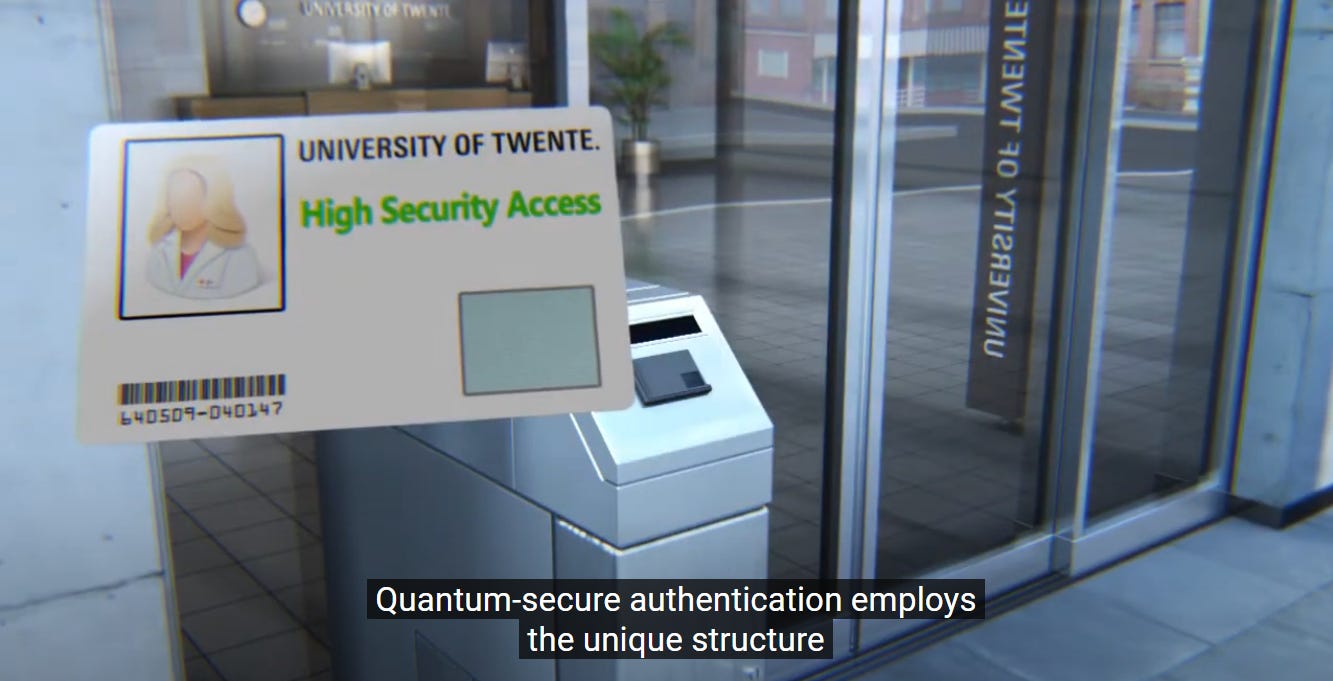
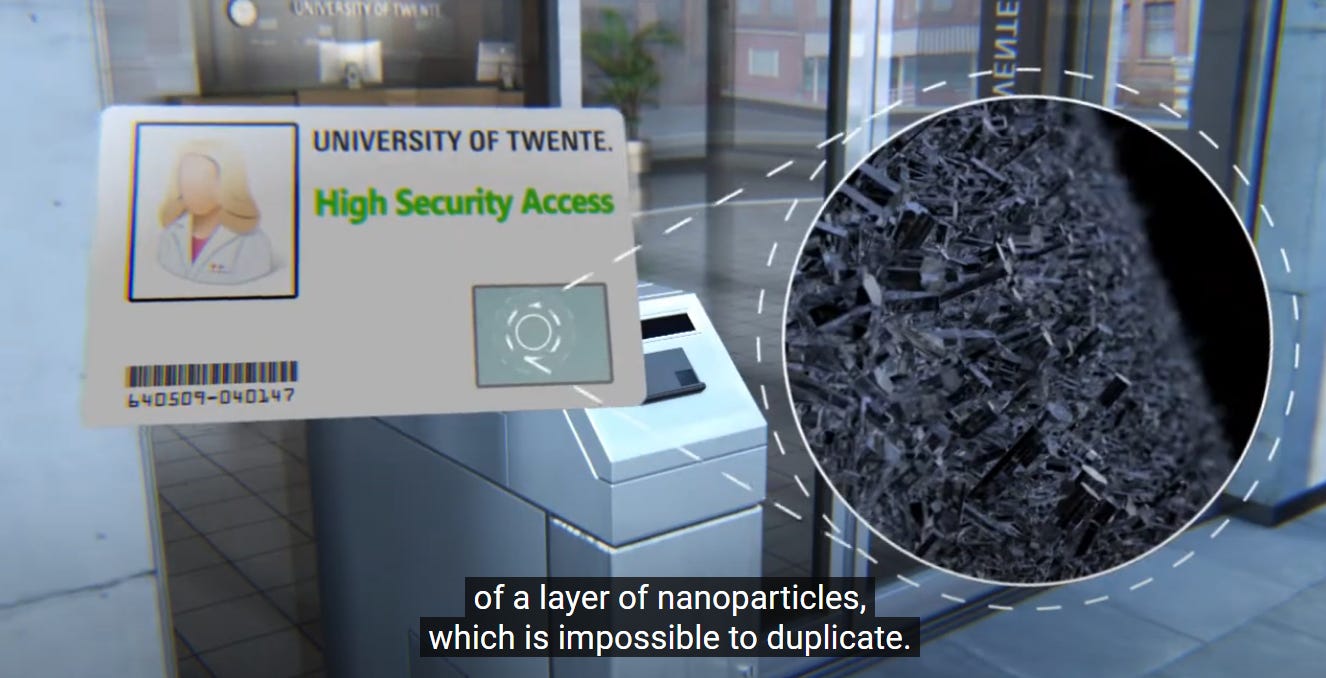

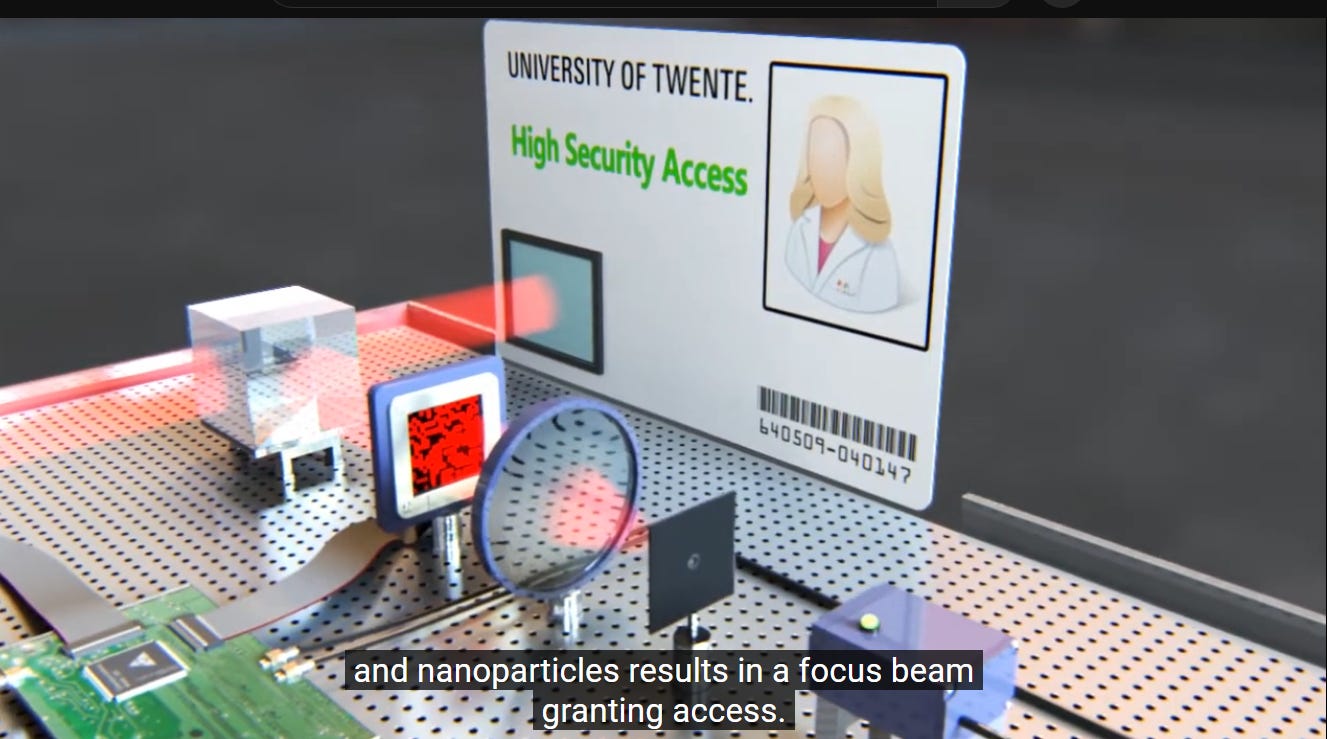



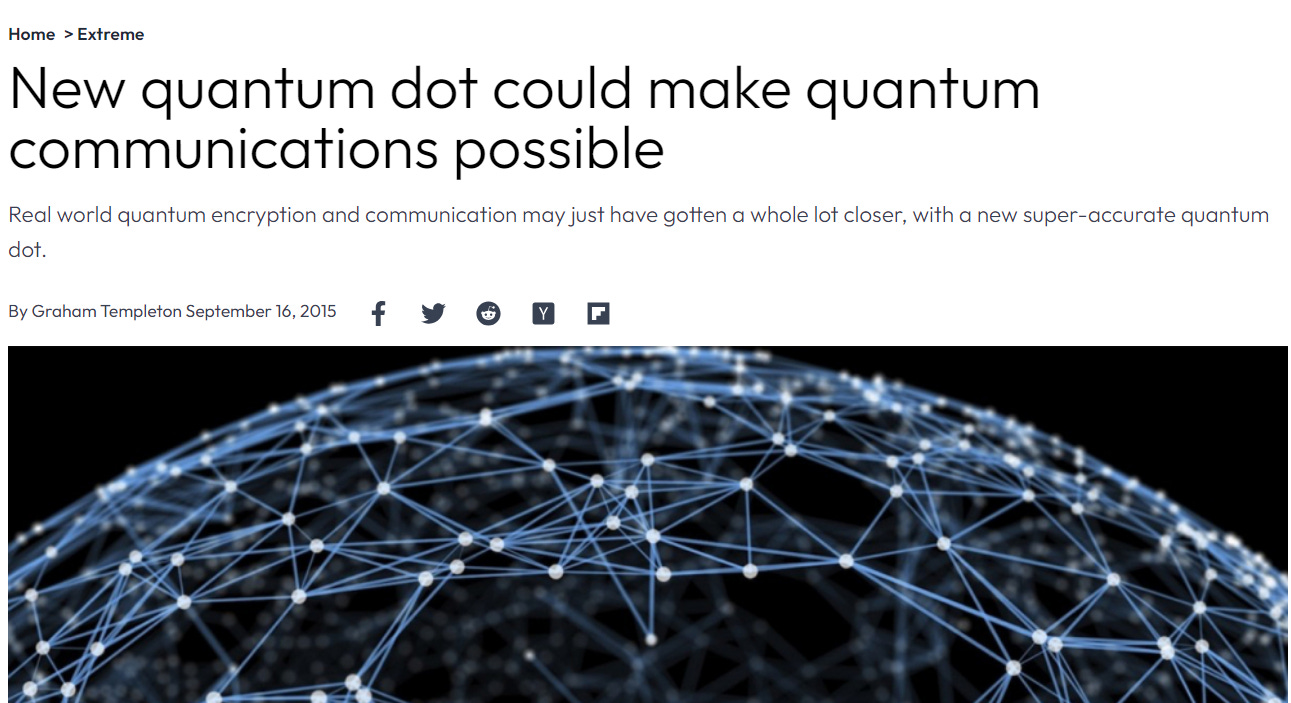



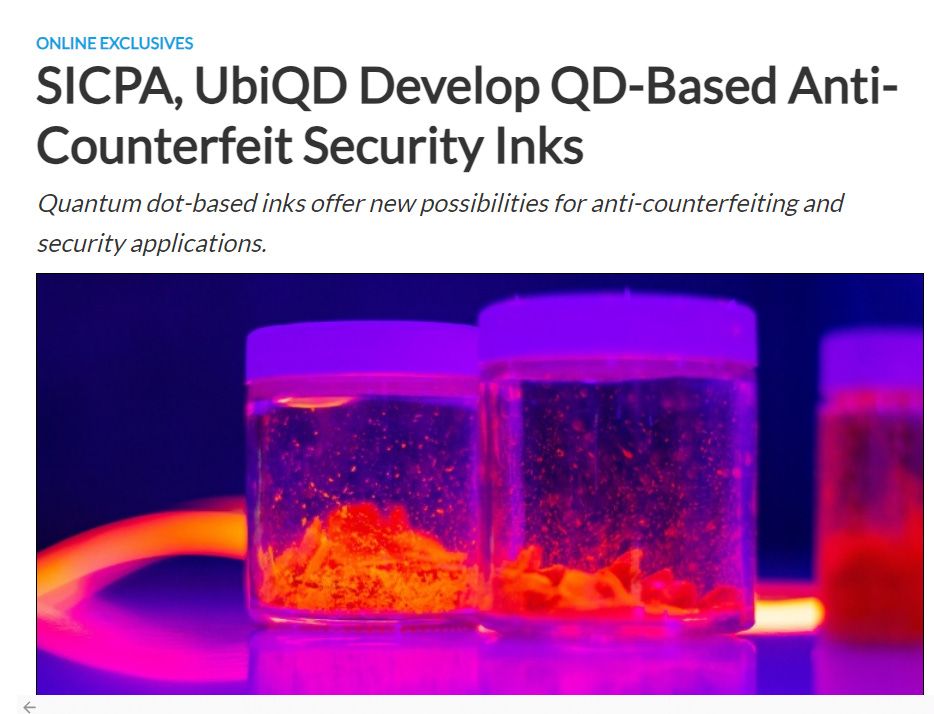









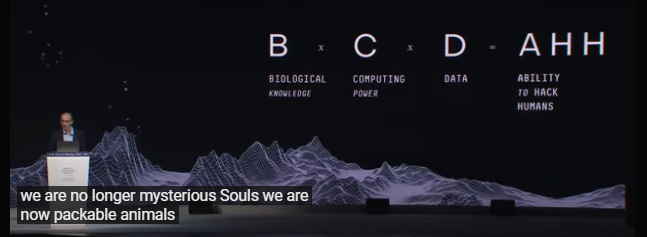








Nobel now has as much value as Pulitzer...TOTALLY ZERO, ZIP, NADA!!!
Rewarding lies, propaganda and evil removes all credibility.
Hola, OH!
Wow. I'd not heard of these 'things' before. Thank you for the in depth and fascinating introduction. And amazing.
And I had an odd 'aha' moment, which on hindsight seems odd not to have had it before.
The HIGH emphasis on security. It hit home to my heart and soul that the need for security, and our rather banal acceptance of that, is actually the truest measure of living in a tyranny! To the extend we accept as 'reasonable' some kind of hyper security is the extent we have accepted a distrustful world that is a threat to us in some way. That is tyranny!
Also interesting is the failure of the MSM to be talking about this in a significant way, even though this stuff is current. Really? Our TV and PCs/Phones all have this stuff? How much of it was put into those injections? Other medicines or agents to aid measurement within the body?
Thank you. Great and important information.